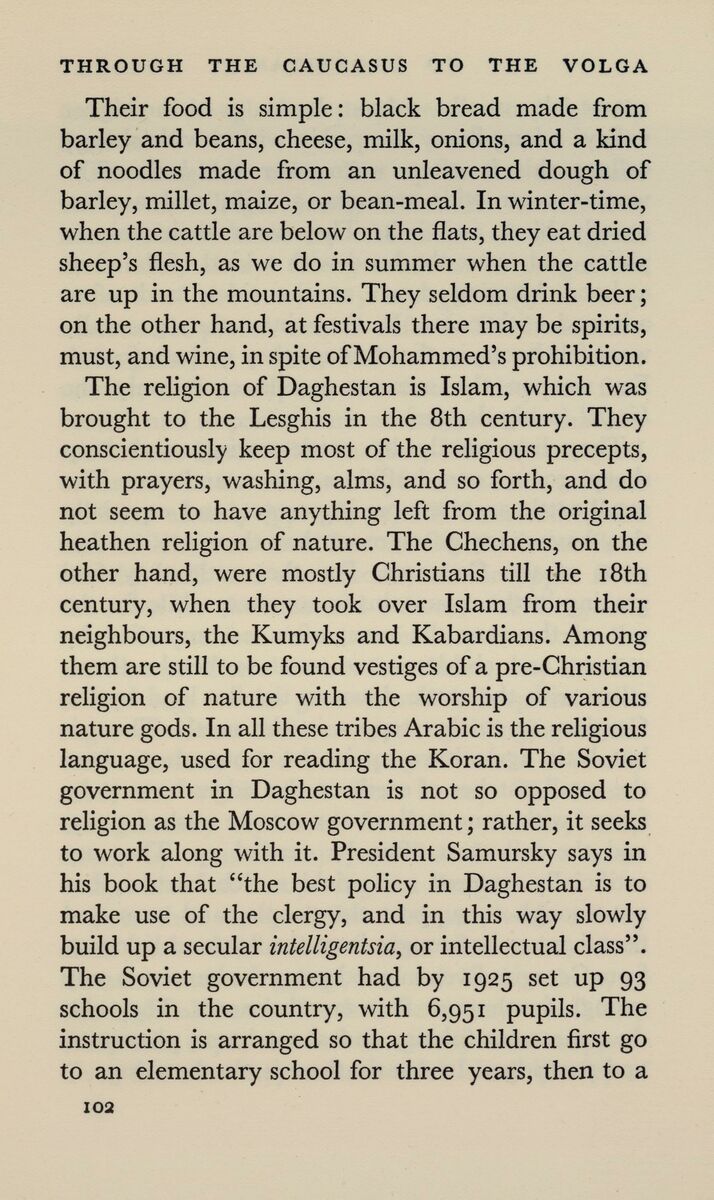
Full resolution (JPEG) - On this page / på denna sida - V. To Daghestan

<< prev. page << föreg. sida << >> nästa sida >> next page >>
Below is the raw OCR text
from the above scanned image.
Do you see an error? Proofread the page now!
Här nedan syns maskintolkade texten från faksimilbilden ovan.
Ser du något fel? Korrekturläs sidan nu!
This page has never been proofread. / Denna sida har aldrig korrekturlästs.
THROUGH THE CAUCASUS TO THE VOLGA
102
Their food is simple: black bread made from
barley and beans, cheese, milk, onions, and a kind
of noodles made from an unleavened dough of
barley, millet, maize, or bean-meal. In winter-time,
when the cattle are below on the flats, they eat dried
sheep’s flesh, as wc do in summer when the cattle
are up in the mountains. They seldom drink beer;
on the other hand, at festivals there may be spirits,
must, and wine, in spite ofMohammed’s prohibition.
The religion of Daghestan is Islam, which was
brought to the Lesghis in the Bth century. They
conscientiously keep most of the religious precepts,
with prayers, washing, alms, and so forth, and do
not seem to have anything left from the original
heathen religion of nature. The Chechens, on the
other hand, were mostly Christians till the ißth
century, when they took over Islam from their
neighbours, the Kumyks and Kabardians. Among
them are still to be found vestiges of a pre-Christian
religion of nature with the worship of various
nature gods. In all these tribes Arabic is the religious
language, used for reading the Koran. The Soviet
government in Daghestan is not so opposed to
religion as the Moscow government; rather, it seeks
to work along with it. President Samursky says in
his book that "the best policy in Daghestan is to
make use of the clergy, and in this way slowly
build up a secular intelligentsia, or intellectual class".
The Soviet government had by 1925 set up 93
schools in the country, with 6,951 pupils. The
instruction is arranged so that the children first go
to an elementary school for three years, then to a
<< prev. page << föreg. sida << >> nästa sida >> next page >>